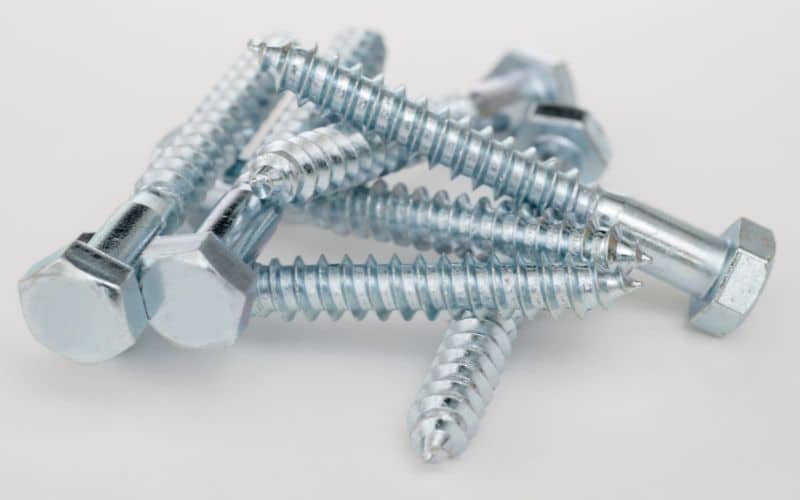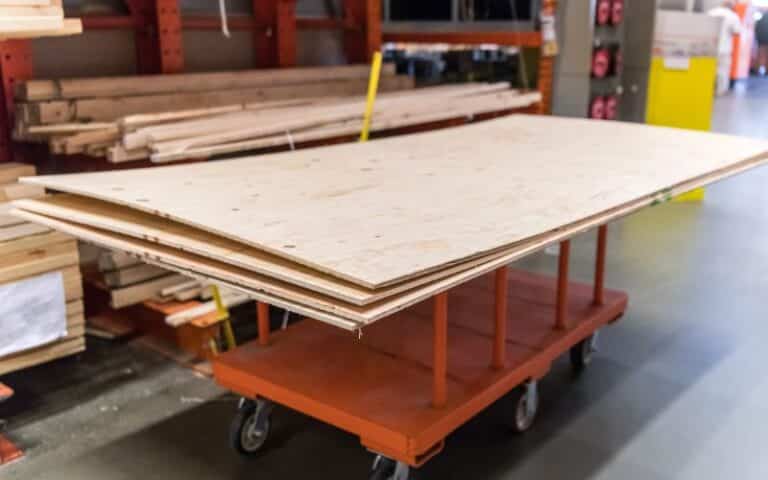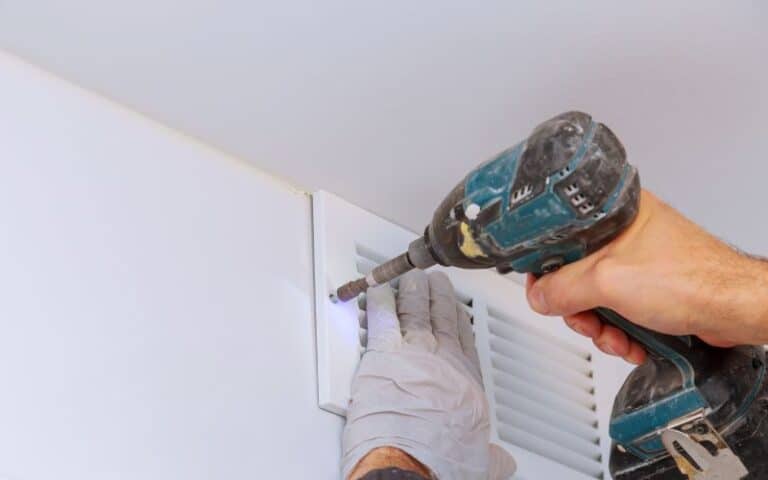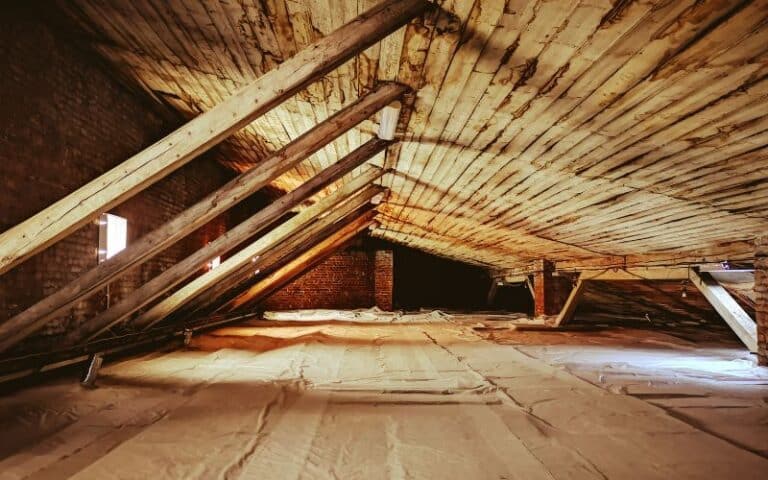Screws may look alike, but each screw is different in some way. And if you’re a professional handyman or trying to do a project yourself, you need to know the differences between ledger locks and lag bolts.
If you know which is which, it will be easier for you to choose the one that is the most appropriate for your project.
Ledger locks are made with strong heat-treated hardened steel, it is durable, thin, and sharp and installation is easier. Lag bolts, on the other hand, are made with stainless steel or silicon bronze. They are larger and are difficult to install. It would be best if you had a wrench to ledger locks while lag bolts are installed with screwdrivers.
Ready for a Roofing Quiz?
Ledger Locks Vs. Lag Bolts; Which Is Stronger?

Ledger locks are stronger than lag bolts. The disparity in strength is mostly because of the materials used to make the locks.
Ledger Locks are made with strong hardened steel; the material is heat-treated, and the screw contains abrasion-resistant properties.
On the other hand, lag bolts are made with less strong materials such as steel, silicon bronze, or even stainless steel. The material used depends on the brand.
Regardless, none of the materials used to make lag bolts are as strong as the hardened steel used to make ledger locks.
Ledger locks are stronger than lag bolts and can take more force, pressure, and weight, making them the best option to use with treated lumber.
Additionally, ledger locks have a higher resistance to wear and tear. And even with wear and tear, the damage is very little.
Ledger locks are also more durable than lag locks. The materials they are made with are sturdy, and the locks passed several tests for strength and durability before they entered the market.
Thus, they are more reliable and easier to work with than lag locks.
But since ledger locks are much stronger and more durable, they are also more expensive than lag bolts. And ledger bolts are more difficult to install than lag bolts.
This brief comparison table will further highlight the differences between the two bolts.
| Ledger Locks | Lag Bolts |
|---|---|
| Ledger locks are very strong | Not particularly strong |
| Made with heat-treated steel | Made with silicon bronze, steel, or stainless steel |
| The sharp and thin shape | It has a larger diameter and is longer |
| It comes in specific shapes and sizes | It comes in generic shapes |
| Install with a wrench | You install with a wrench |
| No need for pre-drilling | We need to pre-drill two holes |
| Easier and faster installation | Difficult and slower installation |
| Highly durable | Medium durability |
| Expensive | Affordable |
| Medium availability | High availability |
| Take up very little space | Take up more space |
What Can You Use Ledger Locks For?
You can use ledger locks to fasten a deck ledger board to the rim joist of a house.
Ledger locks are one of the first wood screws designed to fasten a ledger board to the rim joist of a building with no pre-drilling necessary.
Ledger locks have been put through a series of tests before they hit the market. And they are code-approved.
Ledger locks have successfully been replaced through blots and lag screws. And they are the most popular bolts for fastening deck ledger boards to rim joists.
The ledger locks are also very popular because their triple-coating is corrosion-resistant and very good with lumber that has been pressure treated.
And since it is a requirement that the bolts you use to install the ledger boards must be compatible with pressure-treated wood, ledger locks are the preferred bolts.
In addition to fastening rim joists and ledger boards, there are other building and construction activities on which you can use the ledger locks.
You can also use ledger locks on multi-ply, heavy-duty framing and structural decking, attaching ledger boards, and interior and exterior remodeling.
The locks are strong, abrasion-resistant, and made with very strong materials. In addition, the bolts are slim and versatile.
There is a lot that you can do with them. They are thin; when used, ledger locks take up very little space.
Although each bolt is manufactured for a specific purpose, woodworkers buy bolts in different shapes and sizes depending on the project. But bolts like ledger locks 777
Can You Use Lag Bolts For Ledger Boards?
You can use lag bolts to install ledger boards. However, the lag bolts must be compatible with pressure-treated lumber; otherwise, there will be corrosion.
Also, the lag bolts have to be the correct size before you can use them to install ledger boards.
Builders often use lag bolts to build with wood. The threads in the lag bolts hold them in place so that it’s not just the nuts that hold the ledger boards.
Lag bolts also have extra-holding power, and that makes them very durable. The screws to carry a heavy load is very important to the quality of the deck.
The screws will carry hundreds of pounds, and the bolts stop the bolt from ripping away from the house.
Lag bolts meet all the requirements for ledger board installation. And lag bolts are sturdy, thick, and good for holding equally thick wood.
So, the bolts must be compatible with pressure-treated wood, and the bolts also need a washer and a large head.
Unlike ledger locks, you can’t install lag bolts without first drilling a small hole before pushing the bolt in.
So, you can make a small pilot hole and push the bolt in so the threading will embed itself in the wood.
Lag bolts have varying diameters and sizes, so choose the one that works for you when you want to work with them.
Normally, lag bolts are made of steel or stainless steel. But you can find lag screws that are made with bronze silicon.
You can also use lag screws for other woodworking projects like railway trestles and for building your deck at home.
However, the only part of the deck where you can use the lag bolts is when you have to attach the ledger board to the house.
The recommended lag bolt for attaching ledgers to a house is ½-inch lag screws.
You’ll have to pre-drill, so make the holes and insert the lag screws through the ledger board and into the house. Be sure to place the lag bolts in two rows along the ledger.
The quantity of lag bolts you’ll use to attach your ledger to the house depends on the size of your deck.
But, be sure to follow the precise measurements. You can also ask a professional to give you some pointers.
Do Lag Bolts Require Washers?
Lag bolts need washers. While it is not compulsory to install washers, they increase the surface area of the bolt, making contact with the project’s surface.
Washers also make the fastening more secure and reduce the likelihood of the head digging into the wood and cracking it.
In addition to lag bolts, most fasteners work better when installed with washers. Washers are very good for lag bolt installation.
They protect the surface of the wood from damage when the lab bolts are installed.
They also spread the pressure evenly and prevent corrosion and movement of the lag bolts after they have been installed.
If you don’t install washers on the lag bolts, they will not last very long, which means the project you’ve done will also not last.
Also, if you’re working with softwood, the lag bolt may sink too far into the piece of wood. If you have a washer, you can help prevent that.
Also, washers spread the load around on the wood’s surface, so it doesn’t crack.
Washers may not look very attractive, but they are good for lag bolts and can make your project safer and last longer.
Conclusion
Ledger locks are very different from lag bolts. Ledger locks are stronger and thinner, made with heated steel, while lag bolts are made with silicon bronze or stainless steel.
Ledger locks are also more expensive than lag locks. However, they’re both effective in their respective functions.






